The Snowball Effects of Burnout: Organizational Devastation and Individual Burnout
The pandemic has had a devastating impact on the health of the workforce and its employees!
Employers are experiencing…
Lost your password? Please enter your email address. You will receive a link to create a new password.

The pandemic has had a devastating impact on the health of the workforce and its employees!
Employers are experiencing…
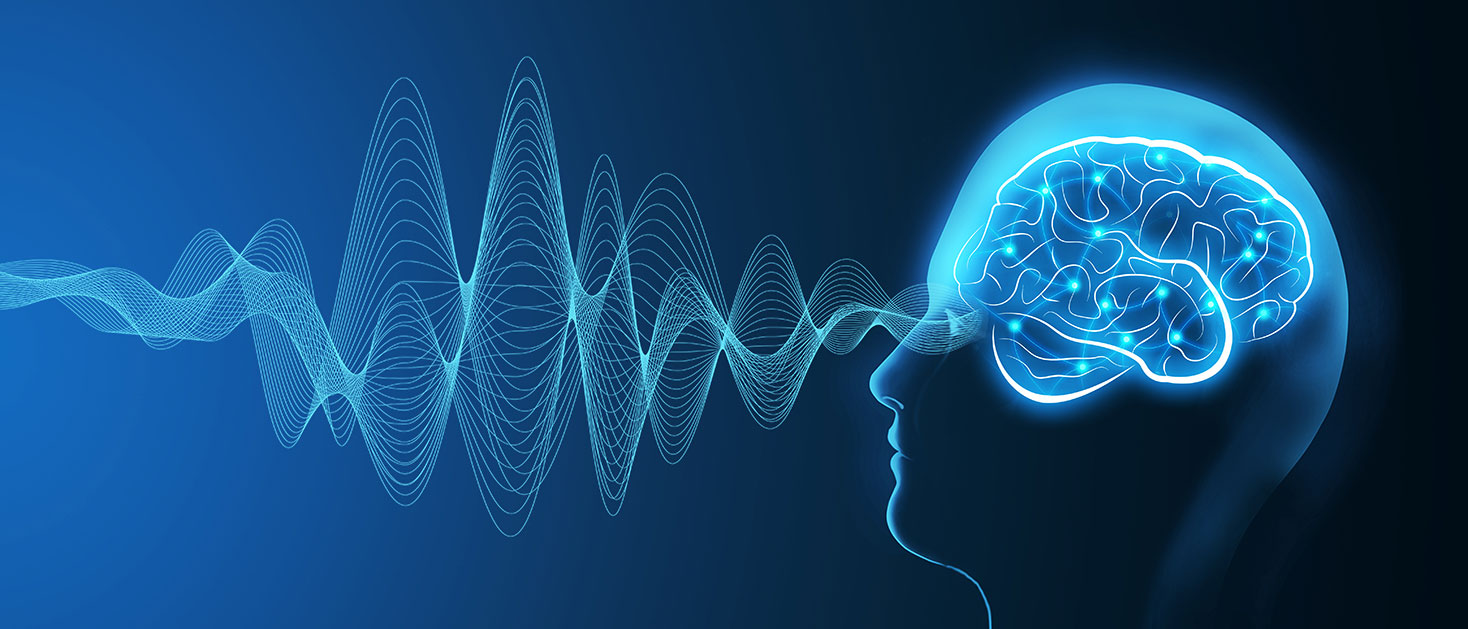
Our minds work like a computer. It receives information and data from the world as we go through life interpreting for us life’s experiences forming our value and belief systems. Our self image evolves from this process.
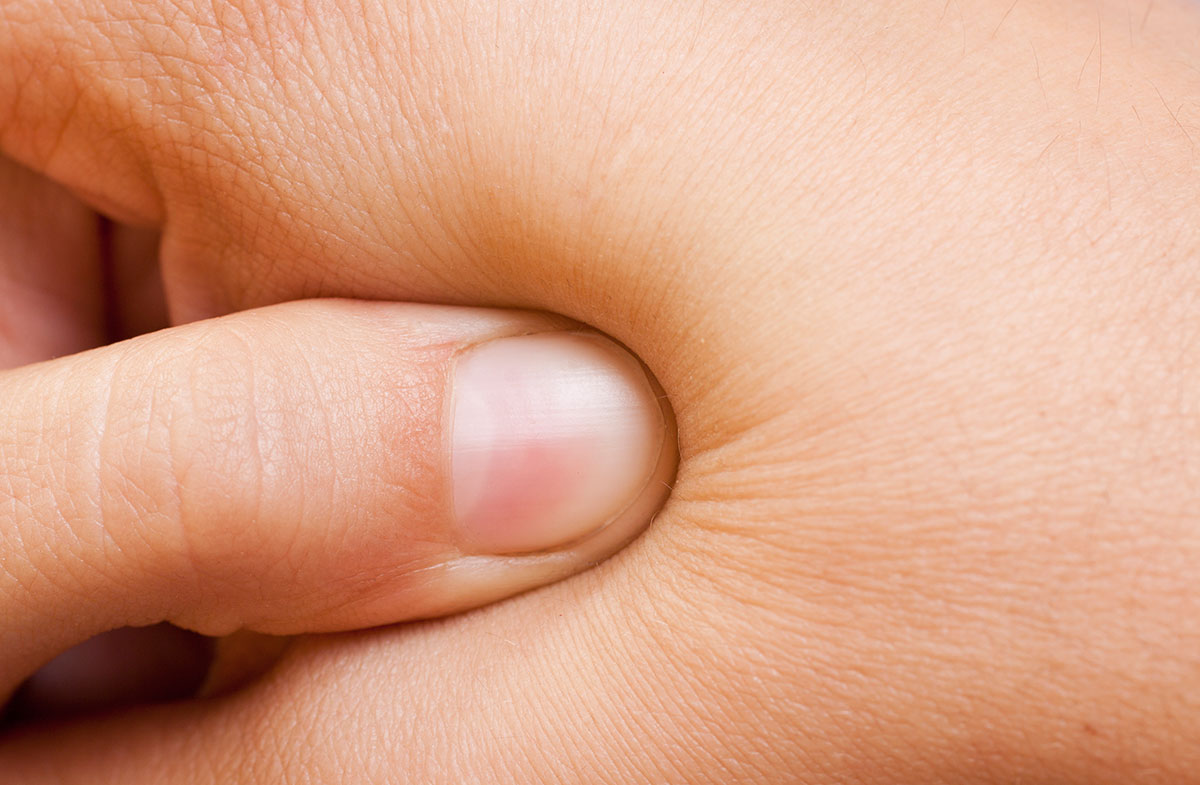
Navigating a post-pandemic world can be difficult. After years of living in isolation from family and friends, and without the social stimulation from in-person interactions, teenagers are suffering. This severely affected demographic is in crisis after lacking the social, emotional and physical growth that would have otherwise occurred inside the classroom due to remote learning.
A sedentary lifestyle has become the norm, and the need for belonging is being fulfilled by addictive and oftentimes destructive social media platforms. Chronic diseases such as depression, eating disorders, and drug and alcohol addiction have lead to an unprecedented number of suicide rates in teenagers across the United States. Stress levels are on the rise, and this steadily growing demographic needs our help.
In a recent double-blind study of over 100 young adults ages 13-19, 48.5% reported that they experience high levels of stress a few times each week, while 39.6% reported they experience high levels of stress on a daily basis.
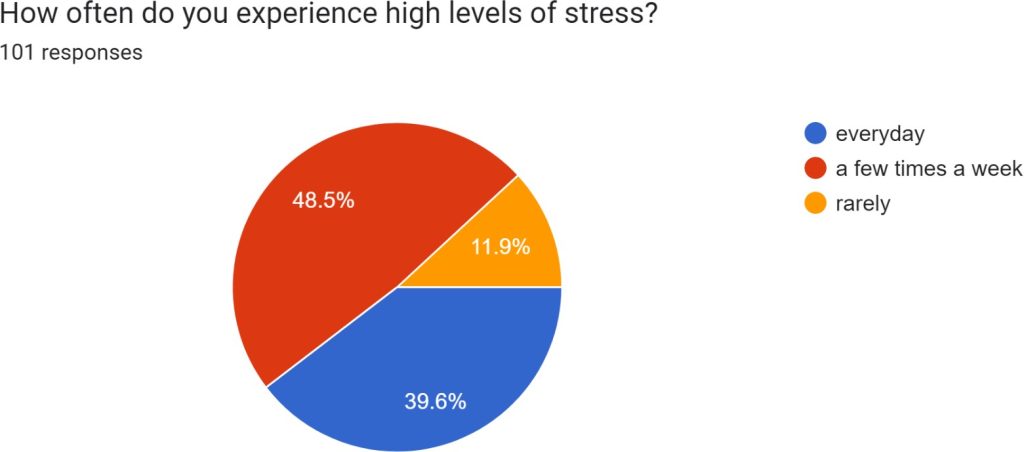
As the world opens up, so does the need to educate teachers, coaches, parents, counselors, and teens that there are tools available to help overcome feelings of loneliness, isolation, depression and anxiety! Learning the most innovative and evidence-based methods to improve both the physical and mental health of our future generations is paramount. It is time to learn the power of pressure point techniques to unlock physical, emotional and cognitive potential both in and out of the school environment.
In another double-blind study, over 100 young adults ages 13-19 were asked if they would be open to learning about pressure point techniques if they knew it could help improve concentration and mood. A resounding 90.1% said YES! Let’s start to better understand and educate this demographic on the tools to not only survive, but thrive in the post-pandemic world.
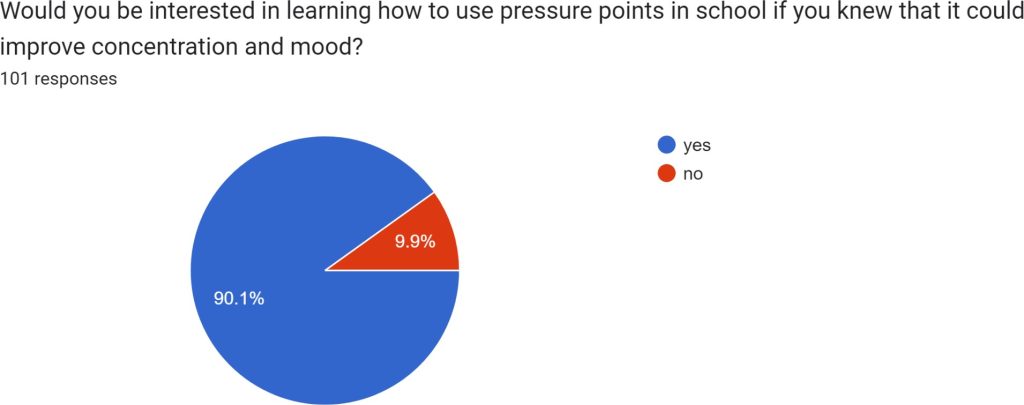
In addition, by learning the most effective pressure points in the body, it is possible to help manage “the most important stress hormones…cortisol, glucagon and prolactin. However, it’s cortisol that has the greatest impact on the physical and mental health of our mind and body” (Vihande, 2022). There are tremendous benefits to infusing pressure point techniques into physical education and academic classes that have been shown to improve concentration and memory, increase blood flow and circulation, as well as decrease stress and anxiety. Hence, fostering social and emotional health and wellness for everyone!
But that’s not all…
According to New York University neuroscientist, Wendy Suzuki, “exercise stimulates growth factors and stores up cells in both parts of the brain… protecting your brain from aging and neurodegenerative diseases.” Therefore, your brain will function at a higher level for more years as you age.
Research shows that exercise enhances short-term brain function by stimulating “…the release of a wide range of neurochemicals and neurotransmitters and growth factors….They include serotonin, dopamine, endorphins. (Suzuki & Horton, 2020). In addition, long-term effects of exercise impact the prefrontal cortex, the part of the brain responsible for problem solving and decision making, and the hippocampus, the part of the brain critical for memory and highly susceptible to aging.
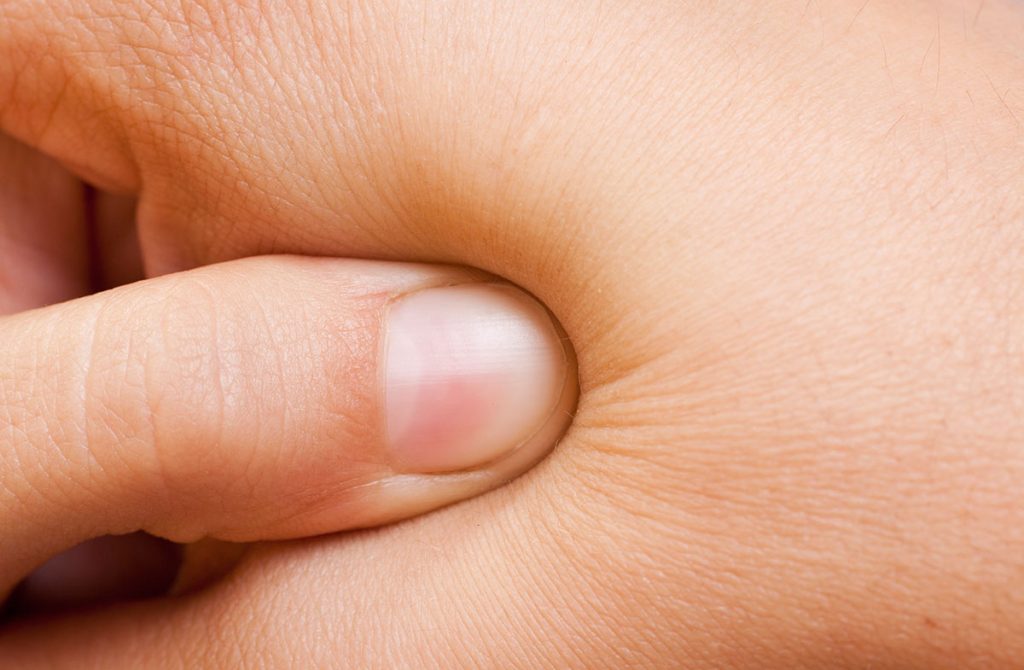
Now, you may be wondering how using pressure point techniques is related to the effects of
exercise on the brain and the answer is quite simple. Once you learn the locations and purpose of major pressure points throughout the body, you will be able to emulate its effects. Fascinatingly enough, it IS possible to replicate the physiological effects of exercise on various regions of the brain.
If you are ready to explore the endless possibilities of infusing pressure point release techniques, this is your call to action!
Written by Christine Conti, M.Ed., with contributor Makenna Ellis.
Christine M. Conti, M.Ed, BA is and international fitness educator and presenter. She currently sits on the MedFit Education Advisory Board and has been nominated to be the 2020 MedFit Network Professional of the Year. She is the author of the multiple MedFit Classroom courses and is the CEO and founder of ContiFit.com and Let’s FACE It Together™ Facial Fitness & Rehabilitation. Christine is also the co-host of Two Fit Crazies & A Microphone Podcast and the co-owner of TFC Podcast Production Co. She is also the best-selling author of SPLIT-SECOND COURAGE.
References/Resources
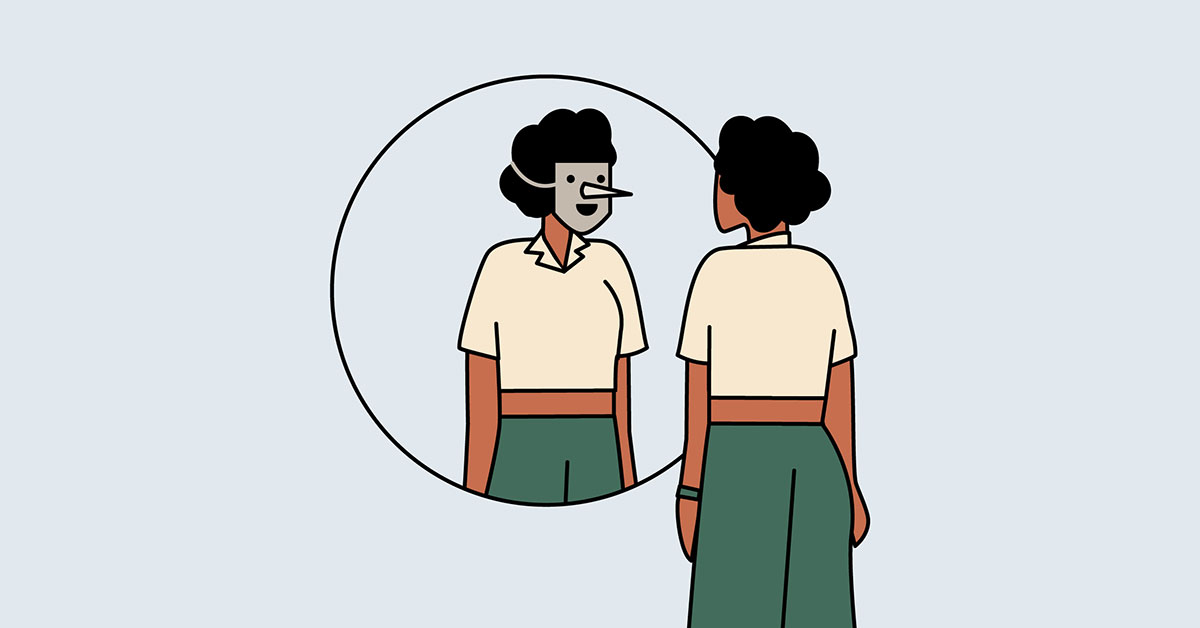
Imposter syndrome is when, no matter what level of success one might achieve, an individual doesn’t feel like they earned it, deserved it, and/or that they have fooled anyone who thinks otherwise. This feeling of not being not being good enough can stop people from trying something new. It can diminish their efforts, because if you’re going to fail anyway, how much effort will you put into it? It can also, at minimum, increase anxiety and decrease pleasure surrounding the task.
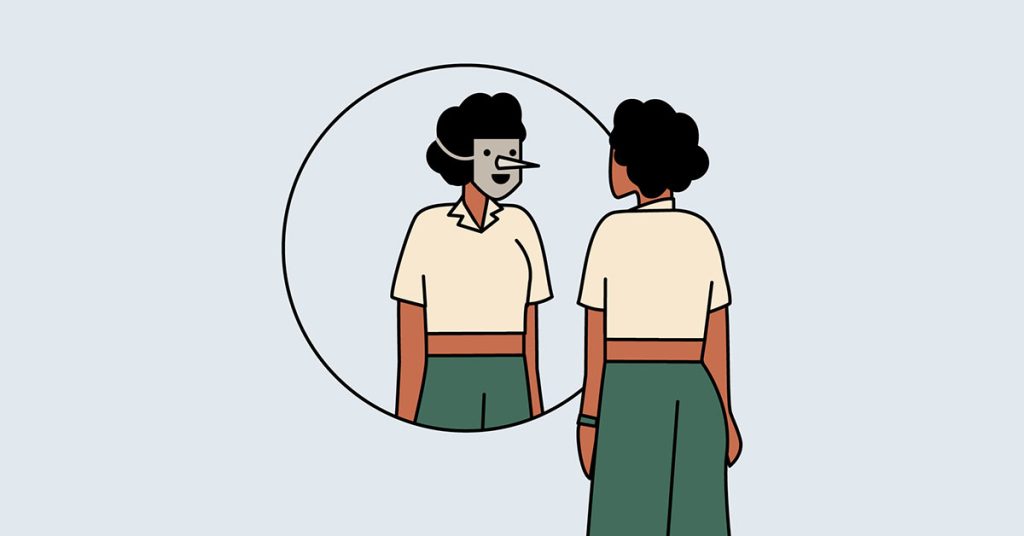
Those individuals that are likely to experience imposter syndrome includes successful women. (In fact, the original research paper in which the term “Imposter Phenomenon” (1978) was coined, was on high achieving women.) It is also prevalent in entrepreneurs, high achieving performers, athletes, and anyone trying something where the outcome is unsure.
There are many reasons that imposter syndrome may manifest itself in gender stereotypes, cultural norms, having had skills and abilities belittled, and self-comparison to others.
The strategies to help overcome imposter syndrome begin by understanding its triggers.
1. Believing you’re the only one feeling this way. You’re not! According to Psychology Today, 25-30% of high-achievers experience imposter syndrome. This includes people such as Tina Fey, Maya Angelou, Michelle Obama, and Tom Hanks.
2. Being a perfectionist. Perfectionism is a sure way to be disappointed in yourself because perfection is never attainable. Learn to accept and be happy with doing a good job and providing value to others.
3. Believing that failing at something makes you a failure. The label of “being a failure” plays into the hands of the imposter. Approach new endeavors as “experiments” that simply carry the expectation of working or not working with increased knowledge being the outcome either way. You can keep a journal of those “experiments” and write down the things that you learned from it. Focusing on what you’ve learned helps keep the effort a positive thing. “The one who falls and gets up is stronger than the one who never tried. Do not fear failure but rather fear not trying.” –Roy T. Bennett.
4. Comparing yourself to others. The judgement of your own value or success by comparing yourself against others is unfair. Other’s perceived lives or successes is an incomplete story. We see what others want us to see. Everyone puts their best foot forward because they want you to think highly of them, hiding their own struggles and insecurities and allowing you to make this lopsided comparison.
5. Not affirming your own capabilities and successes. It is the nature of our society to dwell on the negative and not the positive. i.e. How many positive stories do you see in the news? Train yourself to look for your successes not your failures. Based on an idea taken from Shawn Achor’s “The Happiness Advantage”, write down three things that you succeeded at each day (and they have to be different things each day). This helps you to refocus and look for the positive instead of the negative. This practice can help you to own your own successes.
Experiencing imposter syndrome can hold you back from reaching your full potential and diminish the pride and enjoyment from the successes that you do achieve. Knowing imposter syndrome’s triggers and coping strategies can help you overcome them.
Further readings on imposter syndrome:
Mark Nutting, CSCS*D, NSCA-CPT *D, ACSM HFD, ACSM CEP, is the Owner/Master Trainer at Jiva Fitness in Easton, PA. Mark is the PFP 2016 Trainer of the Year Legacy Award and NSCA’s 2009 Personal Trainer of the Year. He holds 12 certifications in the field, 38 years in personal training and health club management, and has been educating and coaching Personal Trainers for 36 of those 38 years.

For some, the month of March signifies a period of transition and transformation – from dark to light. Our modern species gravitates toward a tendency to want to hurry into Spring, Summer and then the holidays. Leave the darkness behind. Say goodbye, farewell and good riddance to the days marked as short by the diminished presence of light. Go. Go. Go. Our bodies and brains remember a time when fear served us. All of the physiological responses that go along with stress are activated in our body, even when our current situations do not necessitate us fleeing for our life. This begs the question, how can we allow March, April and the events that follow in the lengthening of days, to unfold in a way that is calm, reflective and appreciative of what has been gained in the darkness of winter?

Perhaps another perspective of darkness, is a recognition that there are light sources that only exist because of darkness – stars, phosphors and chemical reactions, to name a few. From the celestial to the terrestrial we all have the capability for being self-luminous.
Now, for others the month of March might be thought of as a verb, which connotes adopting a rhythmic stride. We can create a rhythm by physically marching, or we can turn inward to our natural rhythms (e.g., breath rate, heartbeat, circadian, etc.). According to findings in a recent study, it is suggested that cognitive functioning increases with the adoption of rhythmic step training.
The winter can be about a time of discovering the spaces where there is beauty in rest. Comfort in darkness. Appreciation for the remarkability of stillness. We are beginning the transition from Winter to Spring and not all needs to be left behind. In what ways can you find a place, in March and the about to unfold Spring days, for the stillness you cultivated in winter?
I invite readers to consider finding spaces where you can allow your own rhythmic stride to unfold. How might you honor and appreciate the stillness you cultivated in Winter?
Let’s engage in a 1-minute practice of honoring our internal rhythms and light.
Where you are right in this moment is the perfect place to practice. You have everything you need.
Repeat steps one through four.
Dr. Adrienne Ione is a cognitive behavioral therapist and personal trainer who integrates these fields in support of people thriving across the lifespan. As a pro-aging advocate, she specializes in the self-compassion of dementia.
Website: yes2aging.com
Guided Meditations: insighttimer.com/adrienneIone
Facebook: silverliningsintegrativehealth
References
Park SK, Jee YS. Effects of Rhythm Step Training on Physical and Cognitive Functions in Adolescents: A Prospective Randomized Controlled Trial. Healthcare (Basel). 2022 Apr 12;10(4):712. doi: 10.3390/healthcare10040712. PMID: 35455889; PMCID: PMC9029147.
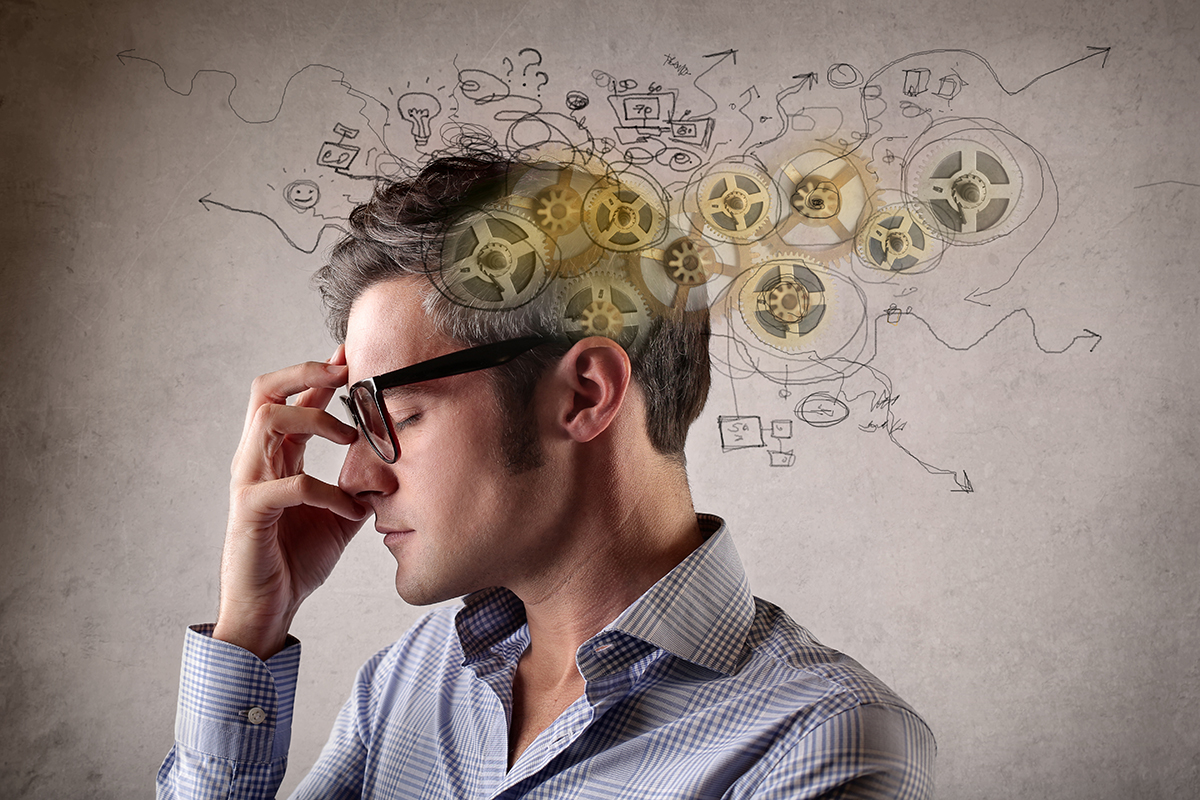
The mind is a powerful tool or weapon that can be used to work for us or against us. Everything begins with a thought. From the moment we wake up until laying our head on the pillow each night, our mind is consumed with thoughts; more than 60,000 a day by the time we reach age 40.
95% of those thoughts occur in the subconscious mind, making us unaware we have them or even what they are most of the time. Thoughts run on autopilot throughout the day unless we do the internal work to become aware of them and shift our thinking.

Awareness is the first step to reprogramming the mind with different thought patterns. Once we begin practicing a mindful lifestyle and becoming aware of the thought patterns that are regularly showing up in our lives, we can then learn and use tools to reprogram the mind to think differently. Think of it like this: the brain is the hardware, and our mind is the software, the software we use daily determines how we think, feel and react or respond to various situations.
The good news is, it is possible to “rewire the brain” a term referred to as neuroplasticity. The latest technology in science reveals that by creating new neural pathways in the brain, we are capable of rewiring neural pathways, creating new neurons that fire together which allows us to think and process differently, thus leading to less reactionary responses and more responding to our external environment.
The question is how do we do this if our mind is on autopilot and we are mostly unaware of our thoughts?
One answer is through the long-practiced method of meditation, a process of refocusing the mind. Meditation is a mental exercise that with practice trains the brain to think and process differently. It is through refocusing the mind to think about one thing and ultimately “no thing” that allows for us to tap into our subconscious mind and create new programming.
Often people say they cannot meditate or can’t calm their monkey mind. That is true for those who do not practice training it to be different. Being mentally fit is a practice that requires exercise, just as muscles do when training in the gym or recovering from a physical ailment. The mind must also be exercised and taught to think and react differently.
There are many different modalities to the practice of meditation, just as there are many workouts in the gym to become physically fit. It’s about exploring the types of modalities and finding one that works for you or your client. Mental resilience is built each time new neural connections are made, each time we go through a challenging time and overcome it, we become more mentally fit thus giving us resilience for the next time we face something hard.
Understanding how the brain works and how it pre-dispositioned to think negatively over positively, allows us to have compassion and patience with ourselves while learning to create a consistent routine of practicing meditation. Discovering the mind/body connection and how they work together also empowers us to be able to choose differently in situations where we become aware we are reacting from autopilot rather than choosing to respond.
Meditation is currently a $1 billion industry and is rapidly growing. Learning how to use meditation in your own life, while also learning how to instruct others through science-based, proven modalities expands your revenue offerings as well as helps clients heal faster and live happier lives.
Check out Briana’s short courses with MedFit Classroom for more. Click course for details:
Briana Bragg is the founder of Vacation of the Mind®, a mental wellness company dedicated to helping one million people or more reduce stress, refocus the mind, and lead healthier and happier lifestyles through practical techniques of nature-centered mindfulness and meditation. Briana is the author of “Journey into Tranquility®”, a meditation teacher training course that utilizes science-based methodologies of nature, meditation, and creative visualization in a three-step process Breathe, Refocus, Journey, curating guided journeys that connect people to nature and stillness. Briana’s dynamic energy and passion are fueled by her devotion to the well-being of others.

The beginning of every new year is flooded with talk of resolutions. The clean slate associated with a brand new calendar often inspires us to make changes in our lifestyles. Typically, these resolutions are centered around health, and in many cases, the emphasis is on weight loss. For those who struggle with eating disorders, this time of year can be especially difficult.

Many studies have shown exercise to help depression and anxiety, improve sleep, reduce stress, and even improve the symptoms of ADHD. It’s important that you pay attention to any changes that you notice in these areas, in addition to changes you are seeking that bring you closer to their goals. Oftentimes, clients are thrilled to report that they feel calmer, happier, sleep better, and experience less brain-fog!

Therapists are now recognizing the benefits of exercise in their therapy sessions focused on depression, anxiety disorders, substance abuse, and eating disorders, among others. With medications that target these mental illnesses, there are often long lists of side effects, some of which can worsen the illness it is trying to treat, or even cause another mental illness in its place. Not only is exercise being acknowledged for the impact that it can have on such illnesses without the risk of side effects, but it is also being acknowledged that exercise can be successful in preventing the return of symptoms.
Post-Traumatic Stress Disorder (PTSD) is among other mental illnesses that exercise is beneficial for. Studies have shown PTSD to have negative effects on the brain and nervous system of the body.
Exercise allows someone suffering from PTSD to approach their hyperarousal symptoms in a safe and controlled environment, allowing the body to change its perception of these symptoms as healthy, instead of as signs of danger. This allows your nervous system to also find balance and release traumatic memory, in simpler terms.
Is getting started easy? Not always, unfortunately. Depression could cause a lack of motivation to get started. Those who suffer from PTSD or anxiety may find the different sensations of working out to be very uncomfortable in the beginning, as they can be similar to their symptoms. One who is chronically stressed may become overwhelmed at the thought of adding something else into their routine.
It does get better because you get stronger! Just keep these things in mind as you begin your fitness journey:
Diana Smithson is Owner of Stronger Today Fitness, a Small Group/Personal Training Studio in Surprise, AZ. Her passion for Fitness and Health creates excitement and encouragement to all she trains with. She enjoys being in the mountains, hanging with her family and sleeping.
Disclaimer: This article was modified from its original version found on https://blog.findyourtrainer.com/2019/06/06/how-exercise-can-benefit-your-mental-health/

When you eat and drink can affect sleep and how you sleep can impact how much and what you eat and drink. Meeting health-related goals like weight loss…